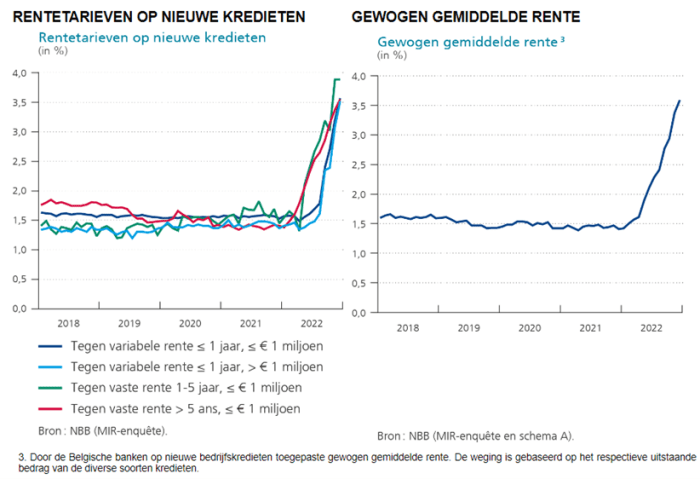Uncertain economic environment impacts demand for and new production of business loans
16 March 2023 - 5 min Reading time
The outstanding volume of business loans at the end of December 2022 was 4.6% higher than a year earlier, amounting to 184.6 billion euros. Both the number and amount of loans granted decreased. In the fourth quarter of 2022, 6.3% fewer loans were granted than in the same quarter of the previous year, with granted amounts being 2.8% lower.
For the number of loan applications, there were still more business loan applications in the fourth quarter of 2022 than in the same period in 2021, but the total amount of these requested loans decreased relatively significantly.
The rejection rate reached its lowest level ever for a fourth quarter. The banks continued to provide credit.
Outstanding amount of business loans at a high level
At the end of December, the outstanding amount of drawn business loans, including commitment loans, amounted to 184.6 billion euros. Compared to December 2021, this represented an increase of 4.6%. In 2021, the annual growth was 4.3%, while in the COVID year 2020, it was only 3.4%.
These are, for example, guarantee credits or documentary credits.
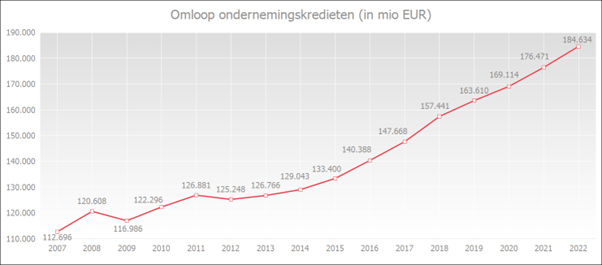
Demand for new credit weakens only in amount
In the fourth quarter of 2022, entrepreneurs requested 6.4% more loans than in the same period last year. However, there was a decrease of 8.5% in the loan amount. The reason why the demand for credit decreases mainly in amount is likely due to a decrease in loan applications for investments.
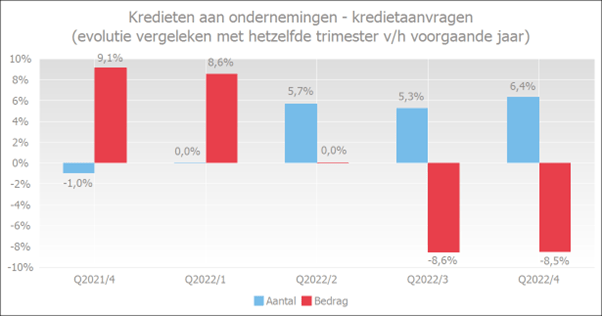
In the BLS survey (Bank Lending Survey), the four major banks indicate that the demand for loans or credit lines by non-financial corporations remained stable in the fourth quarter of 2022. Looking ahead, the major banks also expect the demand to remain unchanged or nearly unchanged.
In the chart, a positive (negative) percentage corresponds to an increase (decrease) in credit demand. A zero percentage corresponds to stabilization.
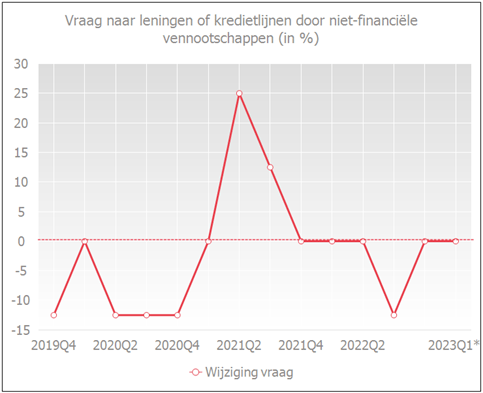
Credit production decreases in number and amount
The evolution of the number of loans granted fluctuated between -2.0% and +2.0% from the fourth quarter of 2021 to the third quarter of 2022. In the fourth quarter of 2022, this is no longer the case, as the number of new loans decreased by 6.3%. For the granted amounts, a decrease was recorded for the first time since the first quarter of 2021. These amounts were 2.8% lower in the fourth quarter of 2022 than in the same quarter of the previous year.

Entrepreneurs experience slightly fewer credit constraints
In the fourth quarter, banks have never refused loan applications to such a small percentage. The rejection rate is therefore at its lowest level ever for a fourth quarter.

The results of the quarterly survey by the National Bank of Belgium (NBB) on the perception of credit constraints among companies also indicate that banks may have slightly eased their credit conditions.
In January 2023, the share of companies considering credit conditions as unfavorable was 34.3%, compared to 35.7% in October 2022. Only large enterprises believed that credit conditions had evolved negatively in January 2023.
The chart below shows the evolution of credit perception. A decrease indicates an easing of credit conditions, while an increase suggests that companies find it less advantageous to obtain credit.
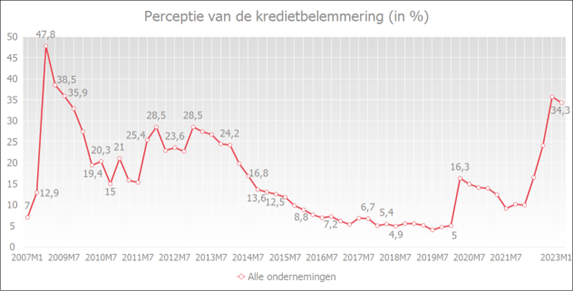
Interest rates are rising
According to data from the NBB, the weighted average interest rate on new corporate loans in January 2023 was 3.69% (compared to 3.59% in December 2022). Interest rates have fluctuated around 1.5% for several years, but they began to rise from February 2022 due to higher market rates.
